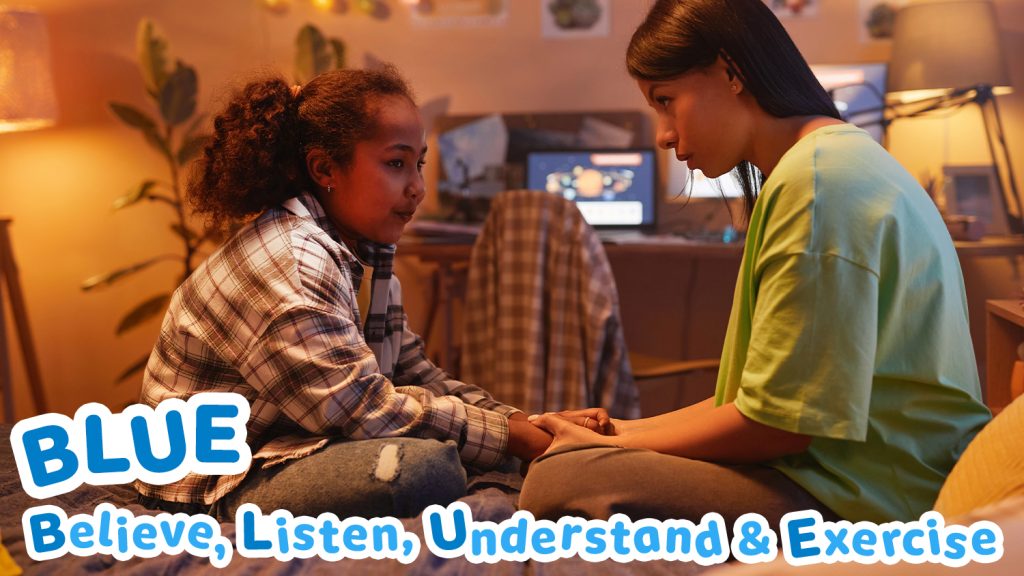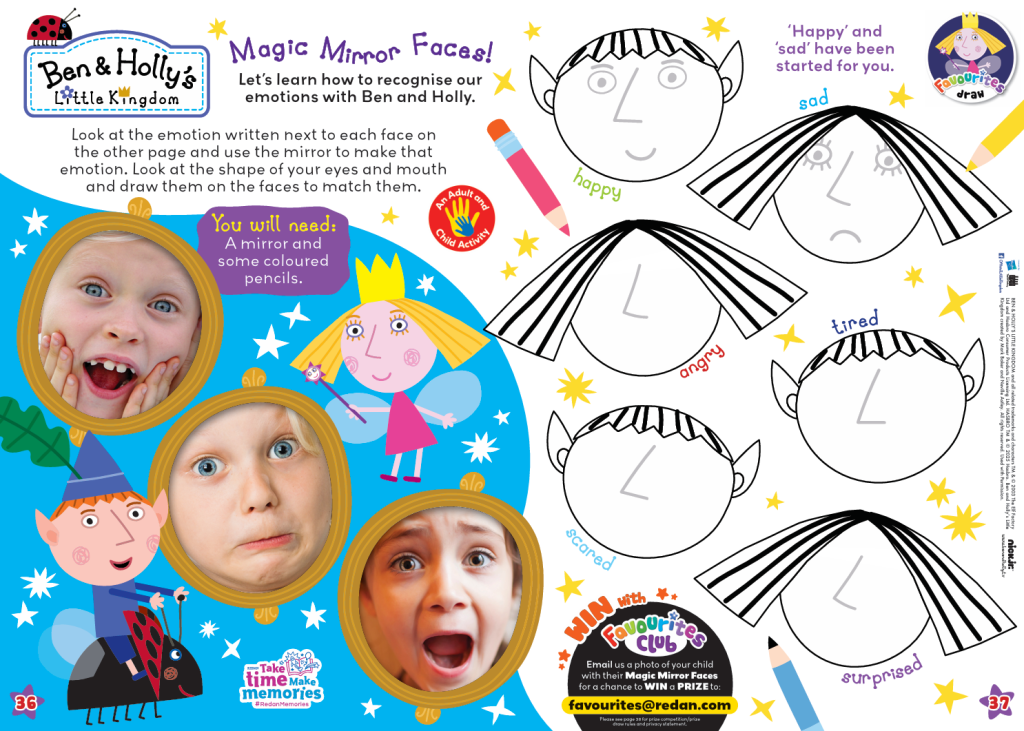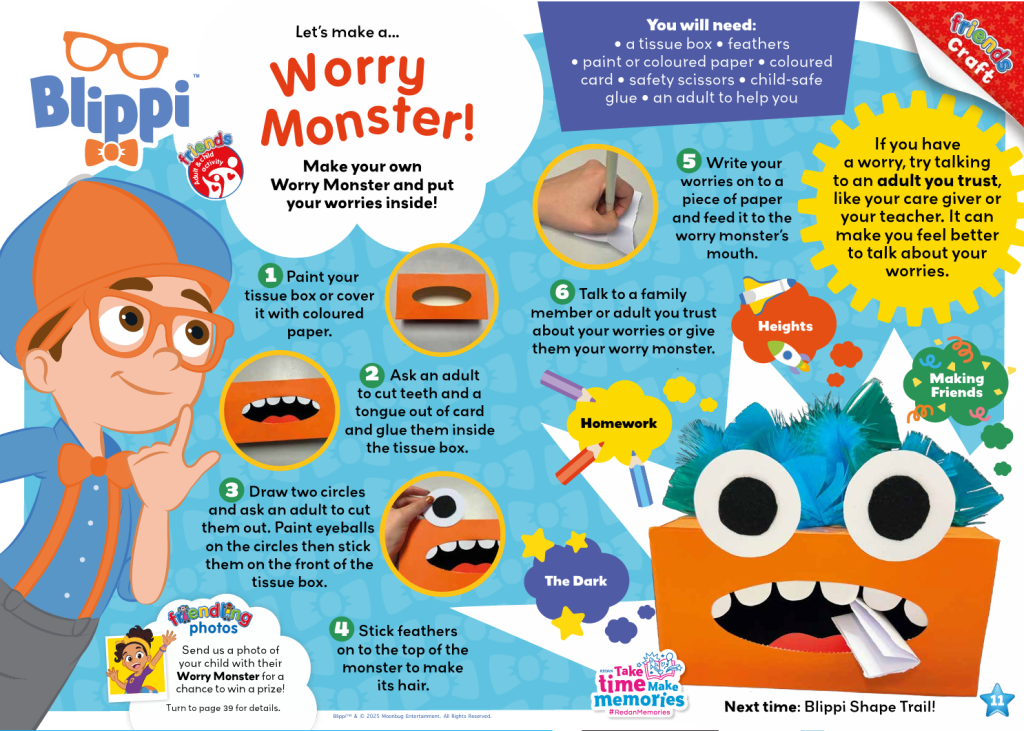
Battling the Winter Blues
Supporting our children through the most depressing time of year.
January and February are dark and often quite dismal months, which can negatively impact the wellbeing of our children. We would like to share some helpful tips for parents and carers to support children through what is widely considered a more depressing time of year.
We have taken some professional advice from the book ‘Talking to Children About Mental Health’ by counsellor and children’s mental health expert, Lily-Jo. To enhance the guidance, we have referenced a few activities, as featured in our magazines, that may help children better understand and manage their feelings.
Lily-Jo’s four BLUE Top Tips:
BELIEVE, LISTEN, UNDERSTAND and EXERCISE
Believe – Believe your child, don’t dismiss their feelings, even if they are frustrating. Adults can feel overwhelmed and distracted by the pressure of life, but it’s really important that children see that those who care for them value their feelings and opinions, and believe them.
We can easily jump to conclusions and say things like, ‘you’re only saying that because you’re tired’, or ‘you only feel that way because you’ve had too much screen time’, but by doing this, we accidentally dismiss their reality, and under value their interpretation of their feelings. Even if we are right and it is tiredness causing their negative feelings or difficult behaviour, it does not make a child’s emotions – anger or sadness, for example – feel any less real.
Often, all we need is a simple sentence tweak to make our children feel believed. For example, if our child is angry and acting frustrated, say ‘I understand that you are angry, do you think you could tell me a little more about why you are feeling that way?”. Through this, we show our children that we value their perspective, that they are loved precisely as they are and that they can express their feelings to us without fear or dismissal. A child who feels loved and listened to is more likely to speak up when they are struggling with their mental ill health.
Listen – Use ‘listening language’, to actively make your child feel heard. Don’t worry if at first your child struggles to open up – starting with an activity you both enjoy, for example, a puzzle or drawing activity, can help create a natural environment for conversation.
There are many simple activities in each issue of Fun To Learn Friends and Fun To Learn Favourites magazines, offering a perfect resource for creating a comfortable setting to instigate conversation.
When we use ‘listening language’, we show our children that we are not only hearing them, but also understanding them. For example, if your child doesn’t want to wear the coat you bought them in the sales because it’s a different style to what their peers are wearing, and they’re worried they’ll be laughed at, examples of ‘listening language’ might be:

· ‘Can you explain why you think that?’
· ‘What do you worry people might say to you?’
· ‘How does that make you feel?’
· ‘Is there something that might make you feel safer doing it?’
· ‘Nothing anyone could say would change my opinion of you’.
‘Lacking language’, on the other hand, dismisses a child’s feelings, for example, saying “You’re being silly” or “what people say doesn’t matter”. When a child feels heard and understood, it is more likely that anxiety will reduce, and they will feel safer about trying the things they would otherwise have avoided, e.g. wearing the coat.

Understand – introduce your child to practical tools to help them understand, and manage, their difficult and painful feelings. E.g. if your child is struggling with excessive worry, creating a simple ‘worry box’ can be an effective tool for managing anxiety for kids of all ages. Put a box in a shared space and the children can, at any point, post into the box a worry that they have written down (you can help them write the worries out if they can’t yet do this themselves). You can then set aside a certain time in the day or week to open the box and discuss the worries inside.
This technique uses a common PTSD management technique of ‘boxing’ a negative experience away inside the mind so that it has less of an impact on everyday life, especially if a child is being continually overwhelmed. It is important to remember, however, that the feelings cannot be boxed away indefinitely – it is essential to make time for the worries to be addressed to help the child express their feelings and recover. Journalling is also a very effective way of helping children process their feelings.
Exercise –moving our bodies is vital to maintaining mental wellbeing, and the release of endorphins is more important than ever at this time of year, when the light is low and holidays are over. Encouraging your children outside might be difficult in the cold, but wrapping up warm and doing some fun, physical activities – even just a walk to the park – can be a fantastic mood boost.
Images: © Shutterstock | Blippi™ & © 2025 Moonbug Entertainment. All Rights Reserved.| © EF/eOne/Hasbro


